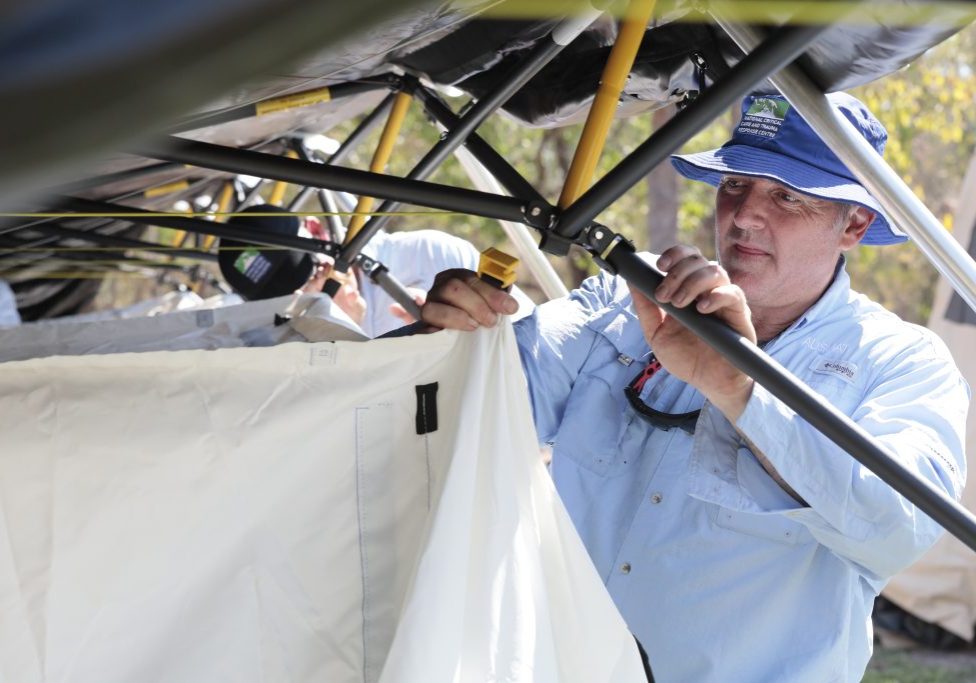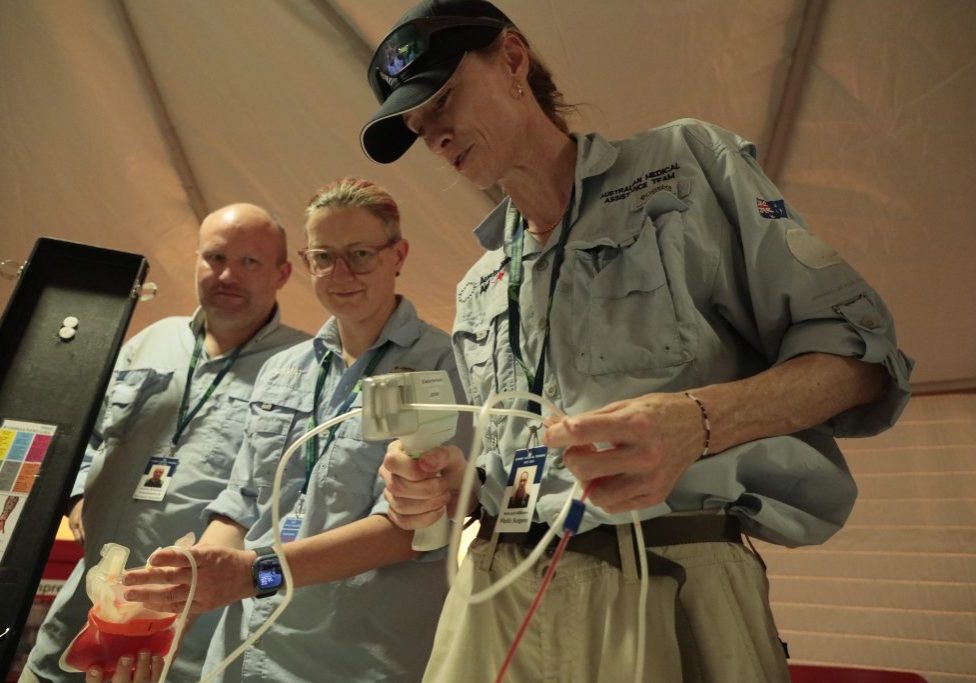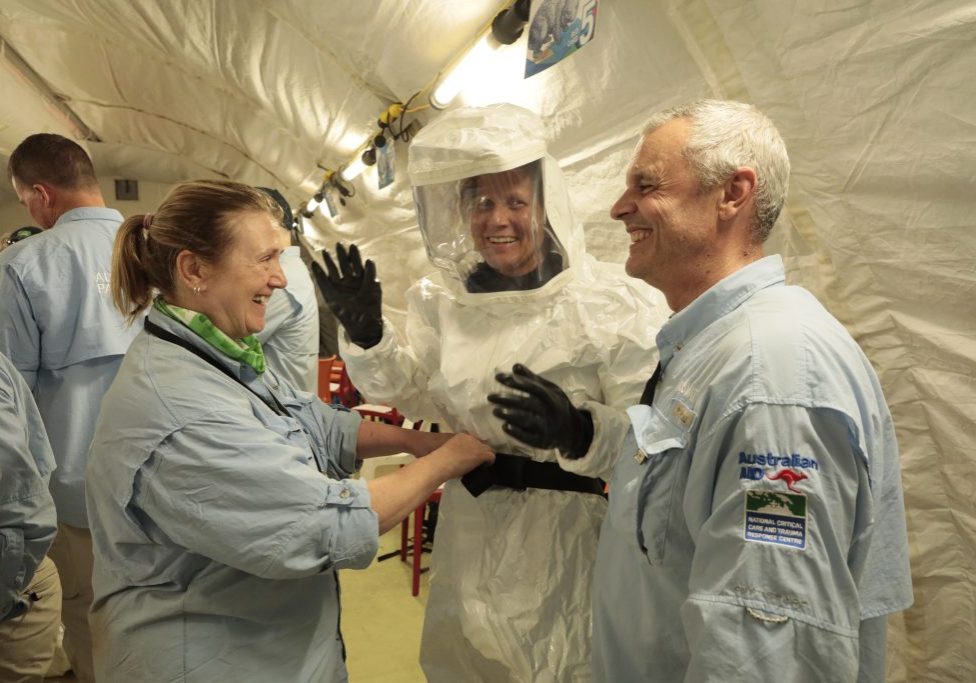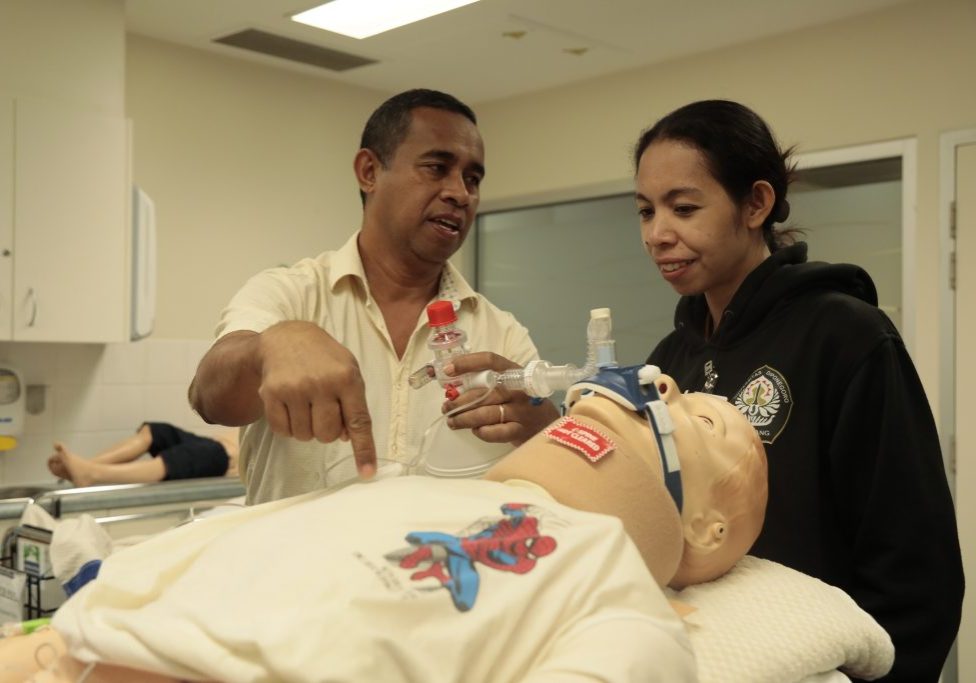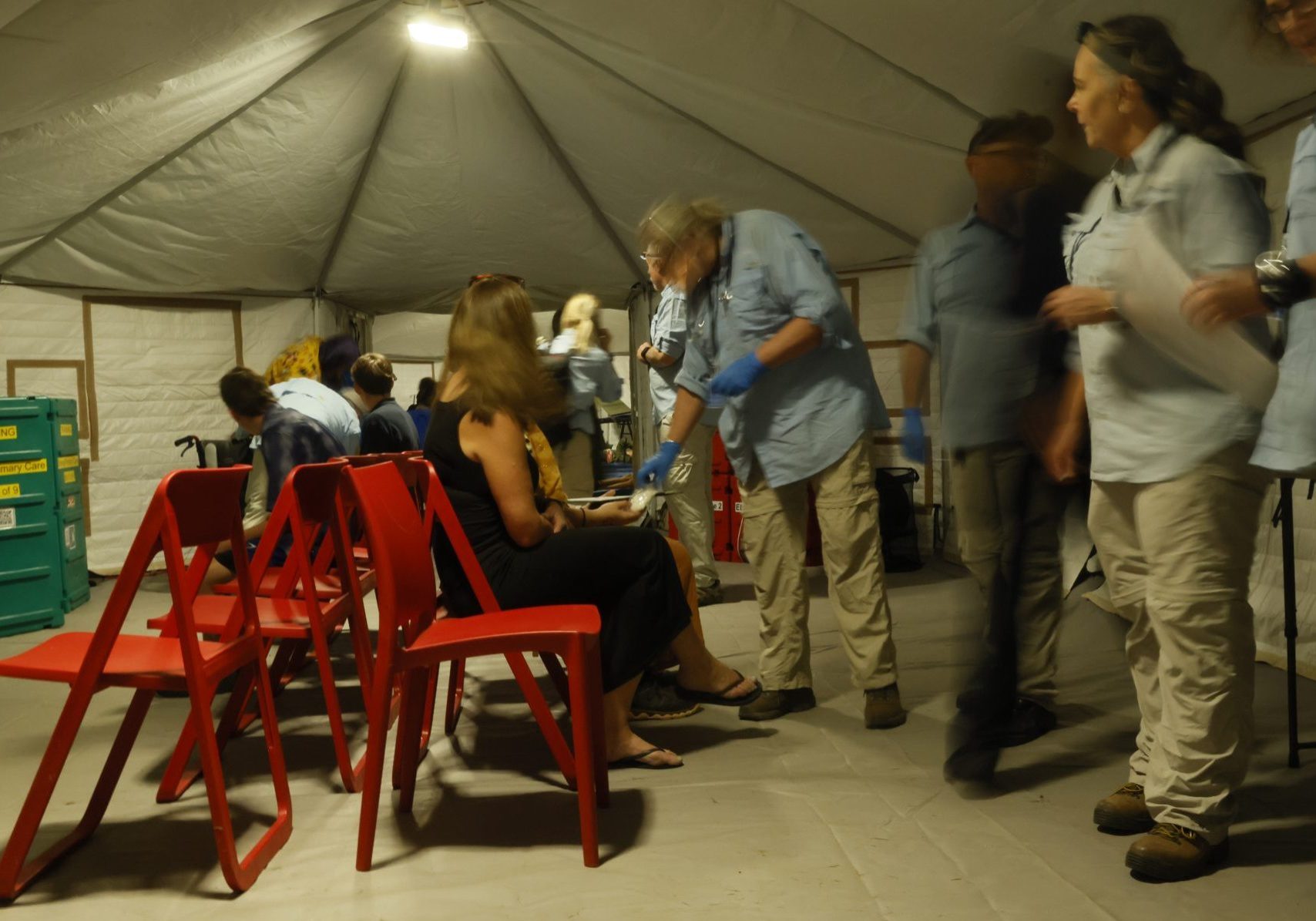Written by Abigail Trewin AM, Director of Education
AUSMAT security is a responsibility that falls on everyone. AUSMAT does not deploy passengers; it deploys active team members. As a team member, your role is diverse, complex and demanding. The security of the team, equipment, and patients is paramount to ensure that we meet our mission goals and return home safely.
To jog your memory of AUSMAT Team Member training, consider the following few questions…
- What steps should you personally take before deployment? What goes in your grab bag?
- How do you position your clothes overnight so you can evacuate or respond without struggling to dress or safeguard footwear from snakes, spiders or other pests?
- Have you identified the most significant risk to your personal safety within the camp? Remembering low light brings with it the concealment of threats.
- How will you safely access the toilets at night, where do you keep your head torch while you are sleeping? Where is the greatest risk to your personal security within the camp, noting the potential for assault in low-light environments?
- How about remembering the details of convoy driving?
- Could you instruct a local driver on the AUSMAT expectations regarding speed, planning, communication, and “actions on”?
- Where will you sit in the vehicle, and what checks will you perform before you leave camp?
- Who will you tell where you are going and what route planning will happen before you leave?
Security on mission starts before you leave Australia. The National Critical Care Trauma and Response Centre (NCCTRC) recently ran a Workshop for AUSMAT Security Focal Points in Darwin. The workshop was designed for logistics personnel to enhance their role as security focal points, providing essential support to the leadership and team members during deployments.
This training opportunity has been created to utilise the skills and expertise of domestic emergency management participants, who are all firefighters and regularly make important safety decisions in their day to day work. The training aims to aid AUSMAT logistics in preparing security plans for deployments and considers the added complexity of international security risk management practices, which differ from those employed by full-time specialists working for United Nations (UN) agencies, Non-government organisations (NGOs), and rapid response teams worldwide.
Security is a team sport, and while our AUSMAT logistics personnel focus on operational security during deployment, our commonwealth colleagues in the Department of Foreign Affairs and Trade (DFAT) and National Emergency Management Australia (NEMA) remain responsible for overarching security decisions, detailed information to maintain our situational awareness and critical operational support in the field to reduce security risk.
The course methodology emphasised practical exercises, real-life case studies, and two field simulations. The course follows ISO 31000. The standard explains the fundamental concepts and principles of risk management while describing a framework and outlining processes for identifying and managing risk.

The next security course is scheduled for June 2024. An expression of interest will be circulated soon for team leaders to equip them with the necessary skills to support and evaluate security plans, actions, risk management and crisis management during deployments.
But before we get to that… how did your answers to the questions fair?

Abigail Trewin AM
Director of Education
Abigail Trewin's career spans various domains within Paramedicine, disaster management and emergency response. As a registered Intensive Care Paramedic for 15 years. She has since assumed key roles in Government Health Departments for over a decade. Her responsibilities encompass interpreting and operationalising global health standards for the Australian government's disaster response capabilities. She has led collaboration with Ministries of Health in multiple countries, including Indonesia, Fiji, Thailand, and South Korea, to apply WHO global emergency health standards. She is a WHO mentor, trainer and EMT verification member Working for the WHO in Geneva 2018 as the senior technical officer of the Emergency Medical Team program. Abigail was instrumental in developing the Australian training program for a multidisciplinary healthcare workforce responding to Disasters . In her operational roles, Abigail has responded to numerous large-scale Australian Government disaster healthcare responses, Pakistan floods in 2010, Philippines Typhoon Haiyan, AUSMAT Mission Lead for multidisciplinary healthcare teams in Fiji Cyclone Winston, Samoa Measles outbreak, Aged Care Crisis and Artania vessel crisis. Her experience included managing infectious disease responses and establishing and running Australia's first Quarantine facility, The Centre for National Resilience in 2020 through to June 2021, supporting 6000 returning Australians. She was also an Executive Director and State Health Command for the quarantine program run by the Victorian Government, overseeing and effectively managing the care and well-being of over 10,000 quarantined individuals distributed across 15 sites and a workforce of 3,000 dedicated staff.




